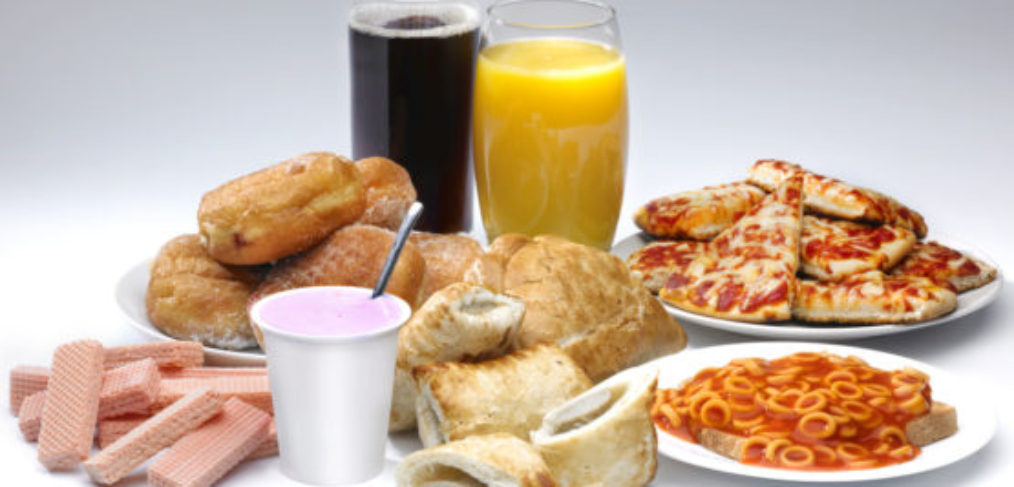Gut Health, Food… and Non Food

If I were writing this about twenty years ago, and I were to discuss the idea of diet cola and one’s gut, a diatribe about how diet cola is a great way to prevent you from developing a one might have been par for the course.
As a 16-year-old girl interested in health, fitness and nutrition in the early 1990s, I honestly believed that a low calorie (and certainly low-fat) approach to diet was the way to go.
In fact, even well into next decade when I learned about an authentic Paleo approach to eating and living in the early 2000s, it still took me a while to shift away from the mentality that low-fat, even if it meant including foods and ingredients that may not really even be food (hello, aspartame) in my day to day regime.
Fortunately, in my journey from the depths of deplorable gut issues which ultimately landed me in a manner of eating which I still advocate (Paleo + Keto), I was able to tune in quite specifically to what works and what must be avoided for my own body to feel its best.
Sadly, however, so many of us are still relying on sugar in all its forms to sustain us.
Whether it is that reliance on stopping at the local juice bar for an all natural smoothie, a diet cola or, for the athletes out there eating this, a heavy reliance on maltodextrin based sports nutrition, depending on sweet isn’t only bad for how we feel in terms of energy and focus, it’s actually toxic to the health of our gut.
In a great article in the Sunday times last weekend (1), the correlation between ingesting not just diet soda, but highly processed, packaged food in general, and the germs that our guts subsequently attract as a result adds one more reason to the long list of why we should be going back to basics and eating a real, whole food based diet.
On top of the sugar and salt, the additives in these products too extend shelf life are directly affecting our gut microbiome, which consists of trillions of bacteria living in our guts.
For example, Clostridium Difficile (C.Diff) is on the rise (2); one of the reasons for which is the ingestion of a sugar called Trehalose, which, as of the late 90’s was found to be a cheap to make stabilizer to keep packaged items on the shelves of the grocery store last longer.
Side effects? A compromised ability to ward off bacterial infections we may have otherwise been able to handle without issue.
Other food additives lead to a weakened mucus barrier, cause inflammation and pave a clear path to obesity and diabetes (3).
Yet other manufactured products, such as the food thickener maltodextrin (4), which, as an endurance athlete, I used to consume under the guise that ‘at least it was gluten free’, are being shown to thin the mucus barrier and nourish strains of e. coli.
In addition, the artificial sweeteners found in all too many products in cans and boxes also created negative shifts in benevolent gut microbes and actually lead to glucose intolerance.
Yet all of the above are not only completely legal, legitimate products to add to our “food”, in many cases we are counseled that eating these items can all be part of a healthy, balanced diet.
All are FDA approved.
And they’re not addressed this issue which, one might say, is perhaps just slightly something we all need to be concerned with.
Why?
Because “their focus is not on addressing diseases that might stem from long term tweaking of our microbes and chronic inflammation, but rather, on acute toxicity.
So how is one to navigate through the aisles of the store, the confusing labeling and the vast array of advice given from experts in varying fields of every type of eating imaginable?
Ask yourself if your grandparents would have eaten it.
Ask yourself how many steps it took for the item to get from where it grew, ran or swam to get to your plate.
Ask how far it’s traveled.
Ask if it’s seasonally appropriate.
While we do ultimately have to self educate, the simple act of becoming aware of what we’re eating, and the result it has on how we feel is a huge first step in the right direction.
Once we begin to become cognizant of one simple thing (is what we’re putting in our mouths really food?), we set the way to developing a better understanding of the food industry in general.
That food is an industry in and of itself says quite a bit; the most surefire way to ensure you’re eating food that is really food is to make most of what you eat come from local, reliable, mindful providers.
If what you put on your plate didn’t come in a package and it didn’t come from far away, you’re already leaps and bounds ahead of the game.
Eat Food And Move.
(1) https://www.nytimes.com/2018/04/06/opinion/sunday/germs-microbes-processed-foods.html
(2) https://www.nature.com/articles/nature25178
(3) https://www.nature.com/articles/nature25178
(4) https://www.ncbi.nlm.nih.gov/pubmed/23251695





